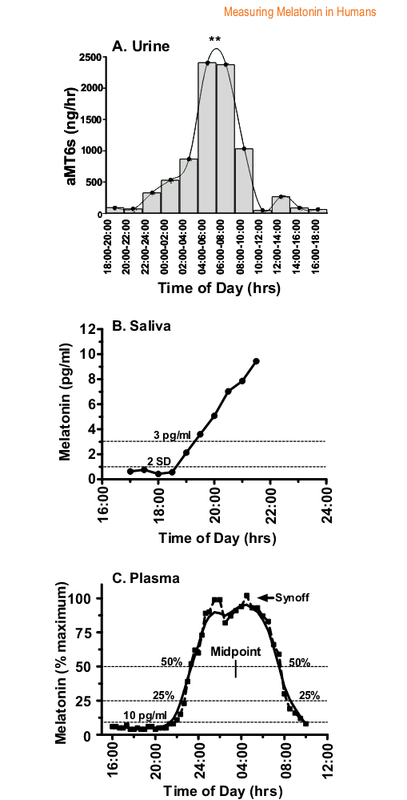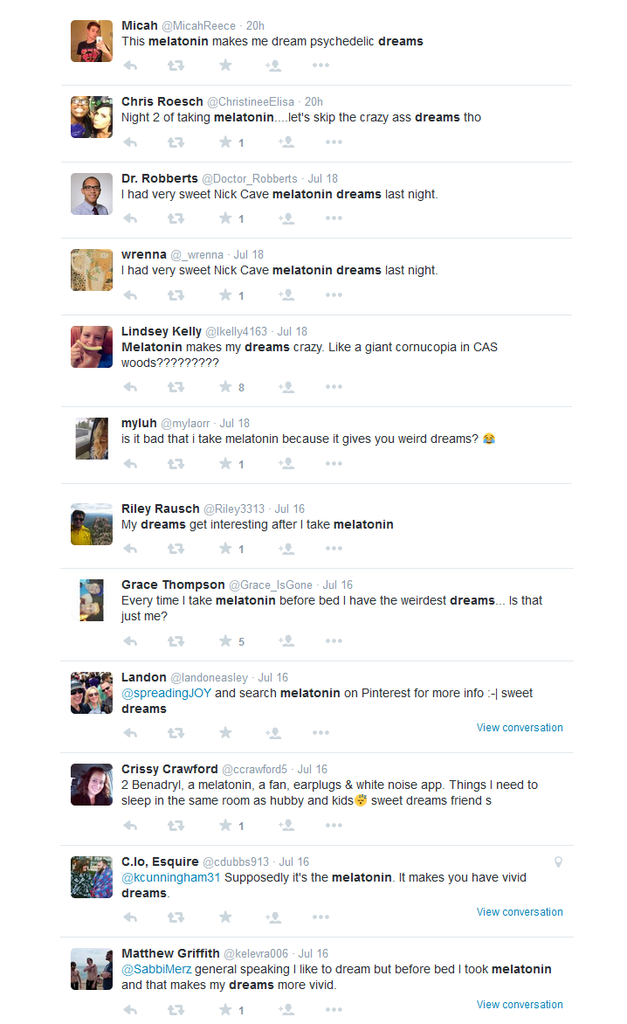Sleep is an interesting aspect of life to observe.
Generally speaking, one-third of a person’s existence will be spent in this unconscious state.The brain tends to slowly wind down at night until the sensation of tiredness takes over. Once again… generally speaking we then proceed to lay down in a darkened room, close our eyes, and eventually fall into the state known as “sleep”. There are five stages of sleep that are largely dictated by the depth of the unconscious state and the differing EEG patterns during these stages.
One of the most mysterious of these stages is known as REM or Rapid Eye Movement. This is the deepest stage of sleep and considered to be the time when most “dreams” tend to occur.
Dreams are formally categorized as “successions of images, ideas, emotions, and sensations that occur usually involuntarily in the mind during certain stages of sleep”. Some might even call the dream state as “hallucinatory” by nature.It’s considered common knowledge these days that Melatonin is secreted by the Pineal gland and that the levels of this hormone peak during our deepest sleep hours. While Melatonin has been administered in hundreds of studies at dosages well above those produced endogenously, there have been no reports of psychoactive/ psychedelic properties from this hormone.

By contrast, the compound Dimethyltryptamine (DMT) is beginning to become a well known, powerful psychedelic molecule. Only until recently (2013), was it identified to be produced naturally and internally within the body of live lab rats. An interesting aspect of DMT is it’s eerily similar structure to that of Melatonin. The differences being one carbon atom and two oxygen atoms. It appears as though this might be an important factor when studying the phenomena of dreams, REM stage, and sleep.
These 3 studies outline key points in the discussion:“In respiratory alkalosis, as blood carbon dioxide (CO2) decreases, intracellular CO2, which is readily diffusible across the cell membrane, moves into the plasma. The loss of CO2 from the cell causes the intracellular pH to rise” – ‘Severe Hypophosphatemia in Respiratory Alkalosis’. Advanced Studies in Medicine. O’Brien, Thomas M; Coberly, LeAnn (2003). 3 (6): 347“Breathing rate (BR) during rapid eye movement (REM) sleep is known to fluctuate largely, while increases in BR during REM sleep reported were small. In our mice experiments, we found that mice exhibit a rapid increase in instantaneous BR (RIBR) of >2 fold during natural sleep with accompanying atonia, laying their sides down. The RIBR was further found in a sleeping mouse attached with EEG electrodes when the EEG amplitude and delta wave power were lower. Therefore, it is likely that mice show RIBRs during REM sleep. Interestingly, similar RIBRs accompanied by atonia and REM burst during REM sleep were also found in humans by standard polysomnographic studies in 11 healthy volunteers (age: 22.3 +/- 2.8) with BR measurement by nasal/oral airflow sensors and chest/abdomen belt sensors. All subjects underwent RIBR of doubled BR at least once a night.” – ‘Rapid increase to double breathing rate appears during REM sleep in synchrony with REM – a higher CNS control of breathing?’ Advances in Experimental Medicine & Biology. Sato S, Kanbayashi T, Kondo H, Mastubuchi N, Ono K, Shimizu T (2010). 669:249-52
“As a result we measured VE, ventilatory pattern, VO2 (Oxygen consumption), and VCO2 (CO2 Production) during sleep in 21 normal subjects (11 males and 10 females) between the ages of 21 and 77 yr. When compared with values for awake subjects, expired ventilation decreased 8.2 +/- 2.3% (SE) during sleep and was associated with a 8.5 +/- 1.6% decrement in VO2 and a 12.3 +/- 1.7% reduction in VCO2, all P less than 0.01. The decrease in ventilation was a product primarily of a significant decrease in tidal volume with little change in frequency. None of these findings were dependent on sleep stage with results in rapid-eye-movement (REM) and non-rapid-eye-movement sleep being similar. Through all sleep stages ventilation remained tightly correlated with VO2 and VCO2 both within a given individual and between subjects. Although respiratory rhythmicity was somewhat variable during REM sleep, minute ventilation continued to correlate with VO2 and VCO2.” Metabolic Rate and Breathing During Sleep – Journal of Applied Physiology White DP, Weil JV, Zwillich CW (1985) Aug;59(2):384-91
Based on these studies it appears rather straight forward that respiratory alkalosis is induced during REM sleep via a rapid increase in breathing rate. This would lead to the removal of one atom of carbon, and two atoms of oxygen (CO2) from brain/nerve cells and into the CSF (Cerebrospinal Fluid). Being that Melatonin secretion via the pineal gland peaks during deep sleep states, breathing patterns increase significantly during REM sleep, and the most vivid dreaming occurring during this specific stage of sleep… it seems as though there would be the potentiality for DMT synthesis from inducing this physiological environment.
It would appear to make logical sense being that DMT and not Melatonin is considered a hallucinogen and dreams are considered to be hallucinogenic and “unreal” experiences by nature.
The question then becomes… what type of experiences would a person have if this same exact physiological environment were induced during a waking state? Would somebody be able to consciously induce their own “hallucinations” naturally? It’s interesting to note that while Melatonin has been administered in clinical settings at doses exceeding those found in OTC recommendations, there have yet to be reports of “hallucinations” during the waking state. However, one can take a quick browse at the anecdotal reports of subjects taking Melatonin as a sleep aid & clearly see that it appears as though there does appear to be an increase in dream experience and/or recollection from Melatonin usage:

A 1977 study published in the Journal of Clinical Endocrinology Metabolism outlined the fact that 1 gram of oral Melatonin ingested per day increased drowsiness in all the subjects but provided no other evidence of toxicity. The administration of 1 gram of oral Melatonin is about 33,333% higher than the regular dosage of OTC Melatonin (3mg) utilized for sleep. This is important to note as it appears as though it is the breath rate that is key in terms of experiences during a state in which elevated melatonin levels have been induced. From crude observation, it appears as though strictly increasing Melatonin plasma levels without any alterations in breath rate provides no hallucinatory experiences.
Much of the theme of DMT Quest is to test theories if they do not willfully induce harm to a person.
One of the easiest ways to test this theory of whether a person can induce a “hallucination” naturally via elevated melatonin levels coupled with a constant, rhythmic breathing pattern is to set a gentle alarm clock at 3am (assuming you were able to sleep by 9pm). This would essentially ensure that your melatonin levels during a waking state were maximized naturally. You can then begin the process of maintaining a consistent breathing pattern until you either A) go back to sleep or B) experience an altered state or “hallucination”.
A less organic method of testing the theory of Melatonin + Respiratory Alkalosis = DMT synthesis would be to ingest Melatonin directly at night and combine it with a rhythmic breathing pattern. A more controversial method of testing this theory would be to utilize cannabis ingestion in order to elevate one’s own Melatonin levels. A 1986 study in Hormone and Metabolic Research showcased the fact that a 1 gram cannabis cigarette produced an elevated melatonin level as high as 4,333% from the original baseline.

While some might view the dream state as merely “hallucinatory” and serving no definitive purpose, it’s interesting to note the brain health benefits from this deep sleep state. A study published in 2013 in the Journal of Neuroscience outlined the regenerative properties of sleep especially during the REM stage.
Perhaps inducing this “psychedelic” state can actually be good for you?
While humans are well aware that the endogenous production of gastric acid (comprised of hydrochloric acid, potassium chloride, & sodium chloride) facilitates the process of food digestion in the stomach, there has yet to be the same comprehension of the greater purpose for endogenous dimethyltryptamine synthesis in the brain.
An interesting observation is if Melatonin is considered to have direct influence on DMT creation in the body, it would make sense that a population living in a naturally “organic” setting free from electrical “pollution” and unnatural lighting could potentially experience this hormone in a much more magnified manner. Anecdotal reports from those that have experienced extended ‘Dark Room Retreats’ (complete darkness for a minimum of 72 hours) would appear to offer some support to this hypothesis.
With the hundreds if not thousands of studies in regards to the importance of Melatonin as a master hormone and regulator of cellular and organ function, it would be difficult to make the case that producing elevated levels of Melatonin would be detrimental to the body. In 2004, the Journal of Pineal Research published a study showcasing an elevated Melatonin secretion rate amongst centenarians (people over 100 years old). In 2007, in the journal Experimental Gerontology it concluded that “these findings suggest that the circadian rhythm of melatonin secretion is maintained in centenarians and, based on the limitations of this study, could be considered one factor in successful aging.”
In addition to the melatonin factor is the INMT ( indolethylamine N-methyltransferase) aspect of DMT synthesis. INMT is an enzyme found in the lungs (thyroid & adrenals as well) that has been identified as being a key compound in converting Tryptamine into DMT. This 1977 study in the journal Biological Psychiatry outlines the fact that there does appear to be a definitive correlation between increased plasma INMT activity and sleep cycles. On the same note, this 2013 paper in the Public Library of Science outlined several studies that point to the fact that mice with compromised lung function exuded lower INMT expression.
To study the mechanics of sleep and it’s physiological conditions is to study the body’s natural “psychedelic” qualities. It also opens up the door for potentially beginning to explain some previously unfathomable phenomena as we look to induce these “REM-like” states when a person is conscious. In an era where more is largely considered “better”, it’s interesting to note that during REM stage sleep, Gamma EEG waves are produced which potentially equates to bihemispheric phase locking (greater cohesive communication of brain hemispheres).
Being that it appears as though dimethyltryptamine plays a key role in altering voltage-gated sodium ion channels, it would then potentially correlate with an alteration in the electrical functioning of the body.
That’s where it really gets interesting…
DMT Quest is a non-profit 501(c)3 dedicated to raising awareness and funds for endogenous DMT Research. This specific field of psychedelic research has been underfunded for many decades now. It’s time to take our understanding of human physiology, abilities, and perception to the next level. E-mail me at jchavez@dmtquest.org with any comments or questions. You can also follow us at Facebook, Instagram, or Twitter.
